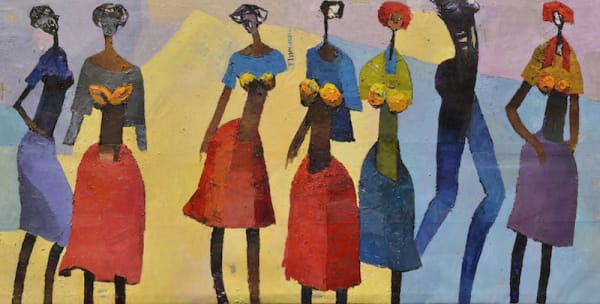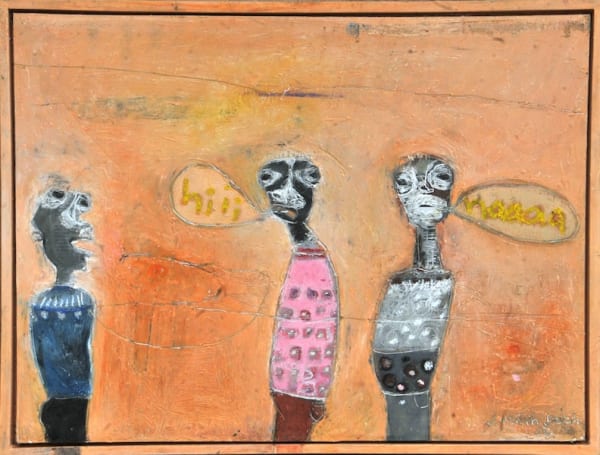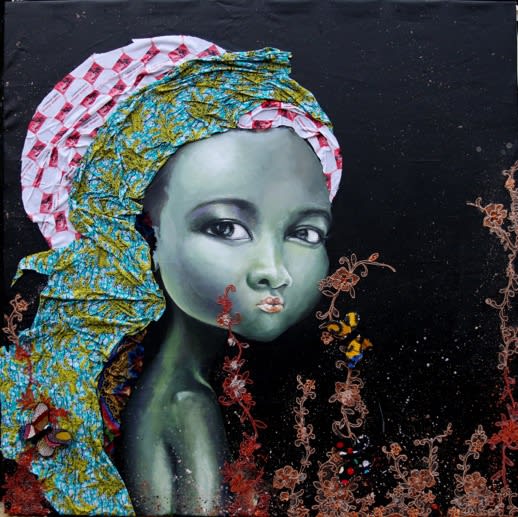From February 26 to March 1, Omenka Gallery will participate in the 2nd edition of the Cape Town Art Fair held at the Avenue, V & A Waterfront, Cape Town. Omenka is proud to present recent work by 4 leading contemporary African artists Joel Mpah Dooh (Cameroon), Duke Asidere (Nigeria), Gerry Nnubia (Nigeria), and Ndidi Emefiele (Nigeria) at the fair.
The 4 artists differ in their primary point of investigation. Among them, Joel Mpah Dooh is preoccupied with experimentation and has enjoyed international critical acclaim with his paintings and multi-media works. The artist is inspired by the tactile reality of his environment though he is mostly an inner traveller. Mpah Dooh works on paper, canvas, corrugated iron and most recently acrylic sheets, while incorporating earth, paints, clay, packaging, wood, and chalk to explore the fragility of individual human identity and how we reinvent ourselves while moving and evolving in the city.
Asidere’s work engages contemporary African politics. Through visual metaphors, the artist comments on the everyday human drama that surrounds him; political, social, psychological or cultural. Furthermore, he adds an element of surprise to these sketches of human drama by infusing them with irony and humour.
Asidere’s broad oeuvre ranges from headless or limbless figures and faces of strangely hybrid beings to densely populated urban landscapes, accentuated with thick strokes of vivid colour. He has recently turned to car enamel paint, which he applies with a spray gun to produce emotionally charged works that retain figurative subject matter, and at the same time emphasize abstract qualities. Perhaps the most distinguishing characteristic of Asidere’s style is his simplicity of form and expressive line, which he achieves with an economy of means.
Gerry Nnubia offers critical possibilities for painting, and explores the tensions between form and formlessness vital to the tenets of modernism with his “acrylic flow”. Nnubia’s technique involves the skilful manipulation of his medium to a liquid viscous flow often assimilating accidental occurrences and temperature adjustments, depending on the effect sought.
Emefiele also adopts the historic practice of using the body symbolically, dating back to the sculptures and paintings of ancient Egyptians, whose “god-like” pharaoh was often depicted much larger than ordinary mortals, his erect, stiff posture signifying his unyielding majesty and authority. The heads of her female figures are large, bearing semblance to those of traditional Yoruba sculptures, carved disproportionately to other parts of the human body to emphasize its function as the seat of wisdom, upon which the destiny of an individual is carried. Here, the female body becomes a contested site and an important source of information, through which she challenges established notions of beauty.
Overall, the exhibition has a strong contemporary outlook and engages the traditions of African art history, resulting in iconic imagery that captures intense and challenging moments.




